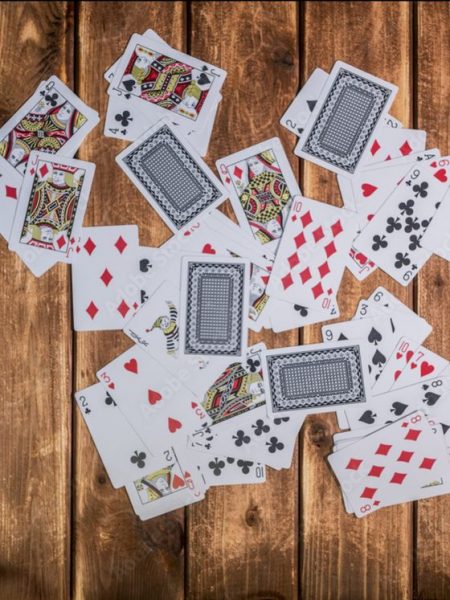 In “Chapter One: Visions of the Possible” in Relationship-Rich Education, authors Peter Felten and Leo M. Lambert introduce the concept of “relentless welcome”, a pedagogical philosophy geared toward establishing an inviting, open, and inclusive classroom space for students, as well as honoring and engaging with the individual experiences of each student. “Relentless welcome” can be as simple as welcoming students by name as they enter the classroom, encouraging students to contact you for questions or attend office hours, or getting to know your students through introductory activities. Below are two relentless welcome activities to include in the early weeks of the semester.
In “Chapter One: Visions of the Possible” in Relationship-Rich Education, authors Peter Felten and Leo M. Lambert introduce the concept of “relentless welcome”, a pedagogical philosophy geared toward establishing an inviting, open, and inclusive classroom space for students, as well as honoring and engaging with the individual experiences of each student. “Relentless welcome” can be as simple as welcoming students by name as they enter the classroom, encouraging students to contact you for questions or attend office hours, or getting to know your students through introductory activities. Below are two relentless welcome activities to include in the early weeks of the semester.
Playing Card Pairs
Purpose of activity (one sentence describing goals): To welcome students into the classroom and make them feel seen by their peers and the instructor.
Materials or resources needed (if any): List of student names (memorized), 24 playing cards sorted into pairs, an understanding of (or a PPT about) reflective listening.
Description of activity (steps, time required, guidelines, deliverable):
I would most likely do this on Day 2, but it would work well to begin the profile module, too.
- As students enter the room, greet them by name, ask how they are doing, and hand them one of the playing cards. Instruct students to find their peer who has the card that matches theirs. Have them sit together.
- At the beginning of class introduce reflective listening.
- Students will talk through the questions on the board, practicing reflective listening.
- What is your name?
- What’s one of your hobbies?
- What are you really good at (can be something outside of school).
- What was the hardest part of your first day at ISU?
- Students write a reflection about their experience with this activity. What did they learn from listening in this way? How did they feel sharing during this exercise?
Question and Answer
Purpose of activity (one sentence describing goals): Introduce themselves to each other and the instructor, stimulate conversation in a way that gives students an opportunity to think first, then get to know each other. Materials or resources needed (if any):
- Analog writing materials (paper/pen, notecards, sticky notes)
Description of activity (steps, time required, guidelines, deliverable):
- Instructors may propose a set of questions, or encourage students to split into groups and propose questions to each other. For example: “How do you define respect?” or something lower-stakes/more playful “Do you think you would survive a zombie apocalypse?” Why or why not?
- Freewrite for 5 minutes, responding as thoroughly as possible to question(s).
- After freewriting, students should share their responses with their pairs or small groups. Encourage students to discuss rather than just share their answers. For example: Are there similarities in their responses, or major differences? Did someone’s answer change based on hearing another student’s answer?
- After sharing with small groups, open the conversation to the larger class. Students may elect to individually share their responses as a form of icebreaker, or the small group may choose to speak as a collective.
Potential adaptations:
- Use collaborative slide technology instead of analog materials
- Could use a polling device if the question is more of polling nature
- Other adaptations could be to the prompt:
- Prompt could be adapted based on tone teacher wants to set about themselves and also for the class community environment
- Prompt could be related to first assignment or learning goals for the semester
 In “Chapter One: Visions of the Possible” in Relationship-Rich Education, authors Peter Felten and Leo M. Lambert introduce the concept of “relentless welcome”, a pedagogical philosophy geared toward establishing an inviting, open, and inclusive classroom space for students, as well as honoring and engaging with the individual experiences of each student. “Relentless welcome” can be as simple as welcoming students by name as they enter the classroom, encouraging students to contact you for questions or attend office hours, or getting to know your students through introductory activities. Below are two relentless welcome activities to include in the early weeks of the semester.
In “Chapter One: Visions of the Possible” in Relationship-Rich Education, authors Peter Felten and Leo M. Lambert introduce the concept of “relentless welcome”, a pedagogical philosophy geared toward establishing an inviting, open, and inclusive classroom space for students, as well as honoring and engaging with the individual experiences of each student. “Relentless welcome” can be as simple as welcoming students by name as they enter the classroom, encouraging students to contact you for questions or attend office hours, or getting to know your students through introductory activities. Below are two relentless welcome activities to include in the early weeks of the semester.